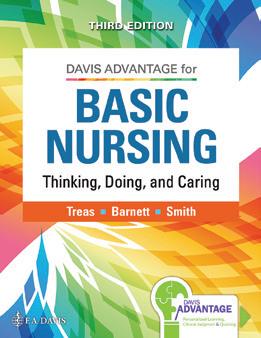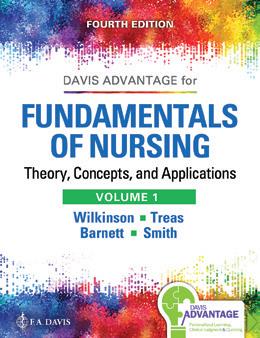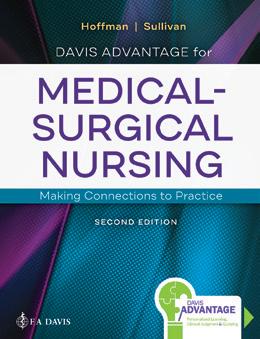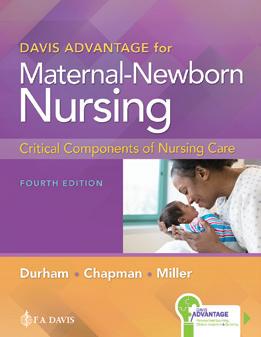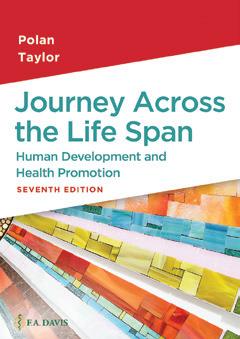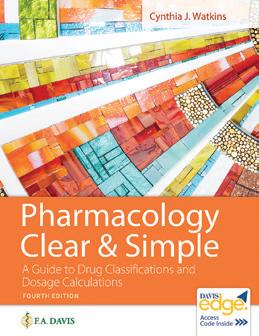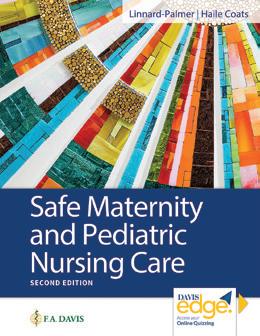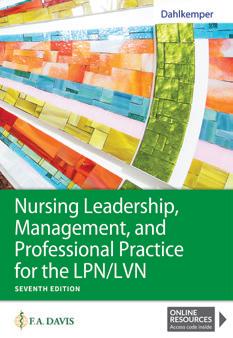










A consistent approach across the RN and LPN/LVN curricula.
Teach and test your students’ clinical judgment to shape the nurses they become.
Incorporated into Davis Advantage across the RN and LPN/LVN curricula.
§ Presents real-life, complex clinical situations that align with the new NGN format and NCSBN Clinical Judgment Measurement Model.
§ Features a dynamic patient chart that expands with additional data as students progress through the case.
Engaging students. Empowering educators.
Using a unique, proven approach across a Learn-Apply-Assess continuum, Davis Advantage is a complete, integrated solution that combines the power of student-focused textbooks with personalized learning, clinical judgment, and quizzing experiences. Dynamic, interactive content, integrated with insightful analytics, equips your students with the tools they need to master course content and prepare for real-world practice.
Davis Advantage addresses your teaching challenges; allows you to create a course that aligns with your unique classroom needs; and gives you the tools to monitor your students’ performance, whether you are teaching in-person or online.
Creates a clear and consistent path to learning across the curriculum.
Prepares students for real-world practice and the Next Gen NCLEX®
Engages students and creates active classrooms.
Makes teaching easier with time-saving resources and personalized support.
Delivers actionable analytics and insights into performance.
§ Includes new NGN item types such as extended drag-and-drop, grid/matrix, cloze, extended multiple response, and enhanced hot spot.
§ Delivers detailed feedback that lists the cognitive skills practiced according to the Clinical Judgment Measurement Model.
Included within Quizzing to mirror the stand-alone NGN item types.
§ Features bowtie and trend question formats.
§ Offers the ability to assign/grade questions or include them in a practice quiz.
§ Provides comprehensive rationales for both correct and incorrect responses.
Included within Test Banks are complex questions that follow the format of the NGN.
§ Provides questions that are unique from those that appear in Davis Advantage, allowing you to separate exam and quizzing experiences.
§ Reflects content from the textbook to further build a solid understanding.
*Added to Davis Advantage products on a rolling basis. Contact us to learn more.
Learn how your students can take an active role in their education and drive their own learning.



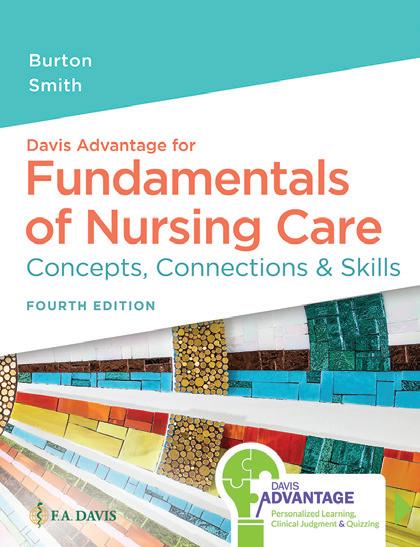
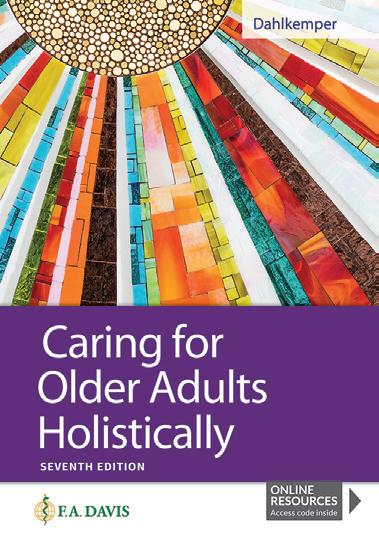





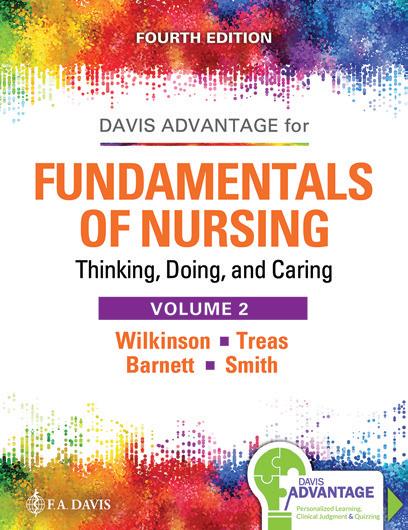






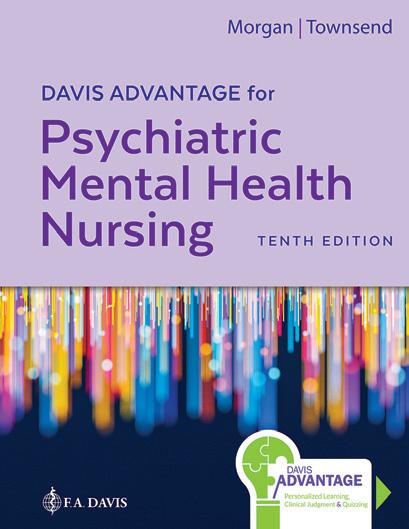
STUDENT EXPERIENCE


The first screen students see when they log in lists the assignments made by their instructor.
FIGURE 30.1 Layers arterial
TunicaTunica Tunica membrane External elastic
Endothelium
Smooth muscle membrane
vessel, forming plaque. The plaque deposits crease over time causing narrowing the coronary arteries, which impedes oxygen-rich blood flow heart (Figure 30.2). The next most dangerous step development atherosclerosis potential plaque rupture. When that curs, platelets aggregate ruptured plaque surface. coagulation cascade initiated, thrombus formation

stimulated. This further decreases obstructs blood flow altogether leading unstable angina, myocardial infarction (MI), sudden cardiac death. Clinical Manifestations The clinical manifestations CAD virtually silent until artery approximately 40% blocked plaque. Ischemia
94% of students

Building a student-centered and student-driven approach
#2 Pre-Assessments
H H H H H
“Davis Advantage is easy to access, with pertinent information. Having students prep before class is essential to learning. Students want to know what is necessary to know. A clear, consistent format is helpful for them.”
Pre-Assessment Questions feature single answer, multiple-choice, and select-all-that-apply formats.
Electrolyte imbalances along increases renal hepatic laboratory values may indicate damage caused perfusion may indicate presence risk factors disease. Laboratory values included comprehensive metabolic profile include: Glucose, 4417_Ch30_568-590 13/04/16 4:44
Chapter Coordinating Patients Cardiac Disorders develops when there imbalance between supply demand oxygen-rich blood the heart tissue resulting insufficient oxygen meet the demands myocardial tissue Infarction, death, occurs when that imbalance severe prolonged, which causes irreversible damage. The primary patient complaint chest pain, called angina Angina classified categories, stable unstable angina. Stable angina chest pain discomfort associated with physical activity. typically linked fixed plaque formations. Symptoms stable angina are often alleviated and/or medications. Nitrates such nitroglycerin that dilate coronary arteries, improving oxygen-rich blood flow heart, typically prescribed for angina. Unstable angina refers chest pain occur rest. two types angina, unstable angina most concerning. identified initial phase acute coronary syndrome (ACS), defined disorder caused acute decrease blood flow through coronaries the myocardial tissue, can precursor should treated emergency. Unstable angina usually prolonged may relieved with medication. addition nitroglycerin, these patients may medications morphine. Supplemental oxygen typically necessary.
ArteryNormal blood
Narrowing artery plaque

Artery cross section Damaged
Normal artery Atherosclerotic plaque Narrowed artery

Endothelium

comparison normal artery with artery narrowed athero sclerotic plaque deposits wall.
Assignments in Davis Advantage are mapped to a specific chapter in the book. Students can read from their printed texts or click the eBook button to be taken directly to that chapter in their free, integrated eBooks
Each assignment begins with a quiz that gauges the student’s comprehension and retention of the content within that topic.
Pre-Assessment Results quickly identify strengths and weaknesses using a thumbs up, thumbs down approach. Thumbs up indicates competency, while thumbs down signals an area of weakness that requires further study.
Topic by topic, students work through their Personalized Learning assignments by watching animated mini-lecture videos and completing dynamic activities that reinforce key concepts and allow them to apply their knowledge.

After completing each video and activity, a Post-Assessment quiz evaluates mastery of the content within the topic.
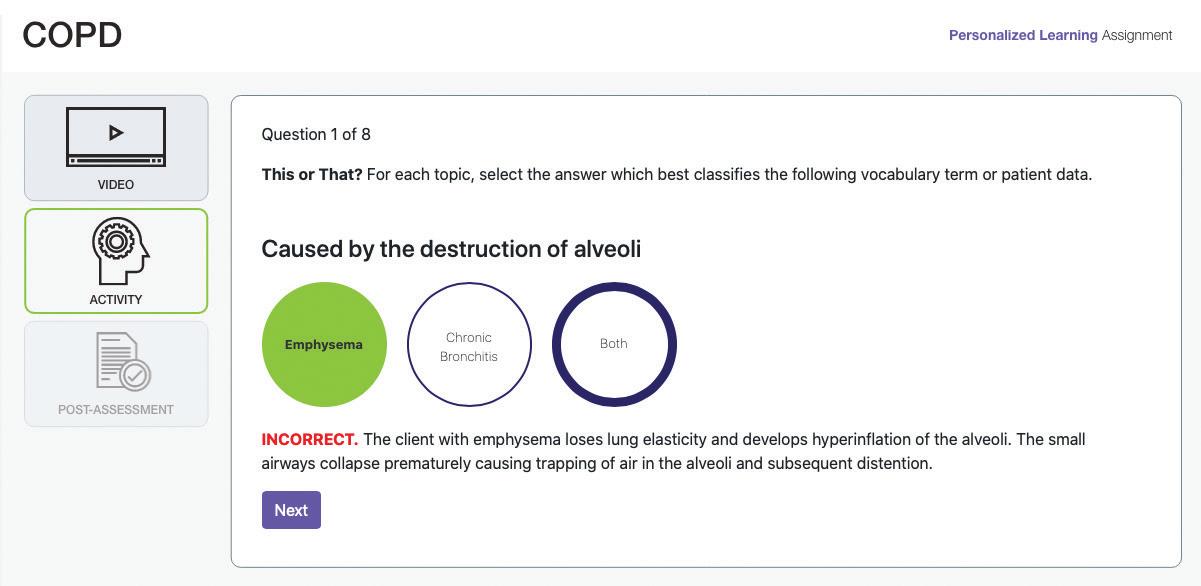

Interactive learning activities check students’ understanding and expand their knowledge.
Comprehensive rationales help students understand why their responses are correct or incorrect.
Videos are animated mini-lectures. They present key concepts in a way that connects with all learning styles and makes content more relatable and understandable.
Each student’s results feed into their Personalized Learning Plan, documenting their progress through each topic and highlighting areas for additional study. Once they complete an assignment successfully, students can return to review any topic for additional practice or exam prep.
Post-Assessment Results provide students with immediate feedback.
The Student Dashboard provides quick snapshots of performance, time spent, participation, and strengths and weaknesses at a glance.
Personalized Learning Plans let students track their progress through each step of the learning process, making it easy for them to identify areas for additional study.
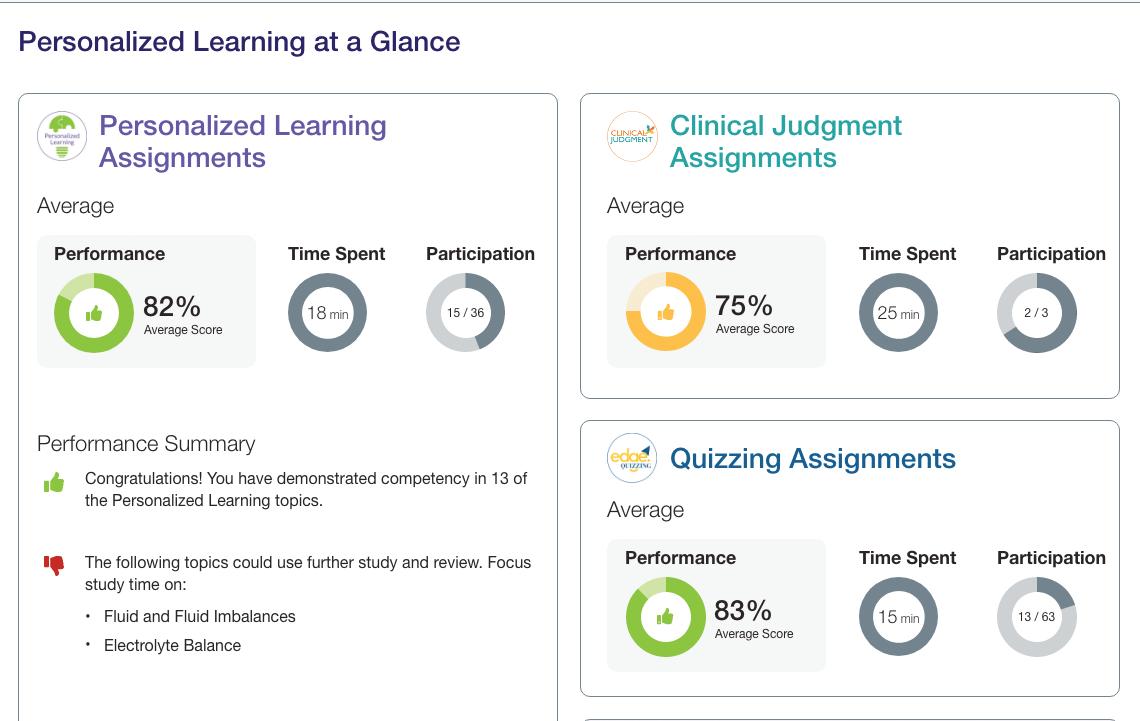

DID YOU KNOW?
89% of instructors surveyed struggle with determining the best way to teach clinical judgment skills.


Clinical Judgment elevates students’ critical thinking and clinical reasoning to the next level, helping them to build the skills they need to practice safe and effective nursing care and to prepare for the Next Generation NCLEX® with confidence.
“The Clinical Judgment activities have created an excellent opportunity to engage students in clinical reasoning and clinical judgment as well as introduce NGN style question styles and format early in the nursing program.
—Jennifer T., Instructor, Maryville University
Real-world cases mirror the complex clinical challenges students will encounter in a variety of healthcare settings and call on them to think critically and make the right decisions to achieve the best outcomes for their patients.
Each case study begins with a patient photograph and a brief introduction to the scenario.
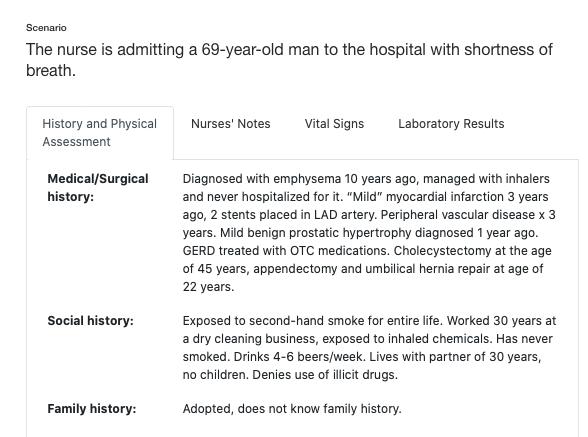
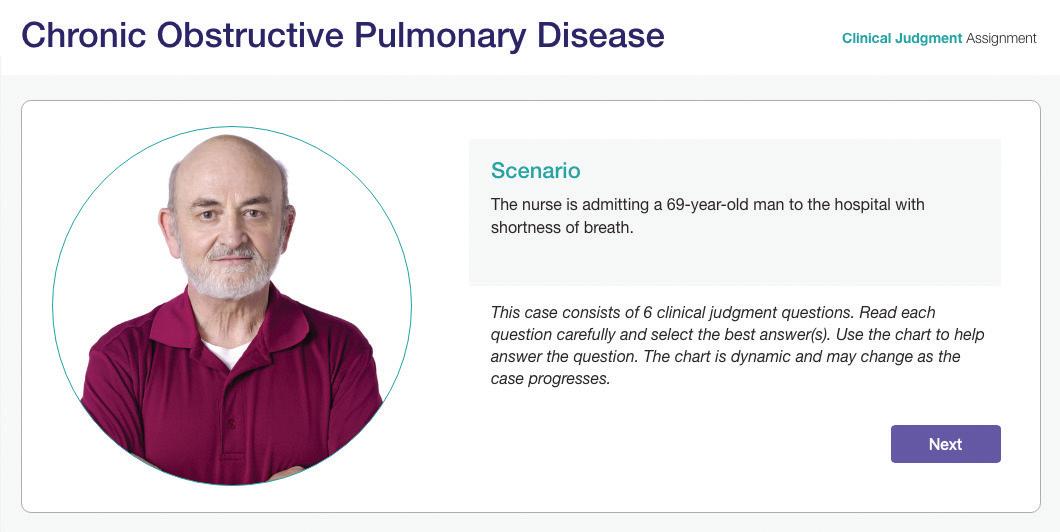
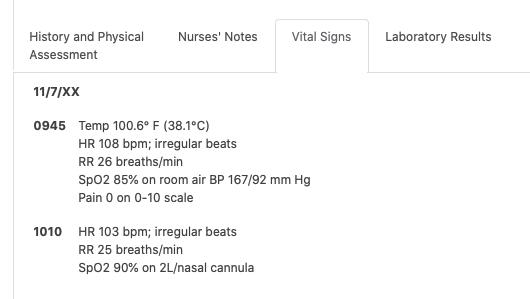
The Patient Chart displays tabs for History and Physical Assessment, Nurses’ Notes, Vital Signs, and Laboratory Results. As the case progresses, the chart expands and populates with additional data.

Six-question, progressive case studies align with the new Next Gen NCLEX® formats and the NCSBN Clinical Judgment Measurement Model, requiring careful analysis, synthesis of the data, and multi-step thinking.
Extended drag-and-drop questions use two approaches. The first requires students to identify the correct selections and then place them in order by priority.
Grid/Matrix questions require students to make a series of decisions across multiple rows. The questions may be single select (with one correct option in each row) or multiple select (with more than one correct option in each row).
Cloze questions walk students through a two-part statement and ask them to select the missing related elements from drop-down lists to complete the statement.
Extended multiple response questions are like the current NCLEX’s “Select-All-that-Apply,” but are more complex, featuring up to ten answer choices/distractors.
The second is similar to standard drag-and-drop, but includes more options to select from.
Enhanced hot spot questions require students to review chart details (such as the Nurse’s Notes or Laboratory Results) and highlight relevant, concerning, or supporting data.
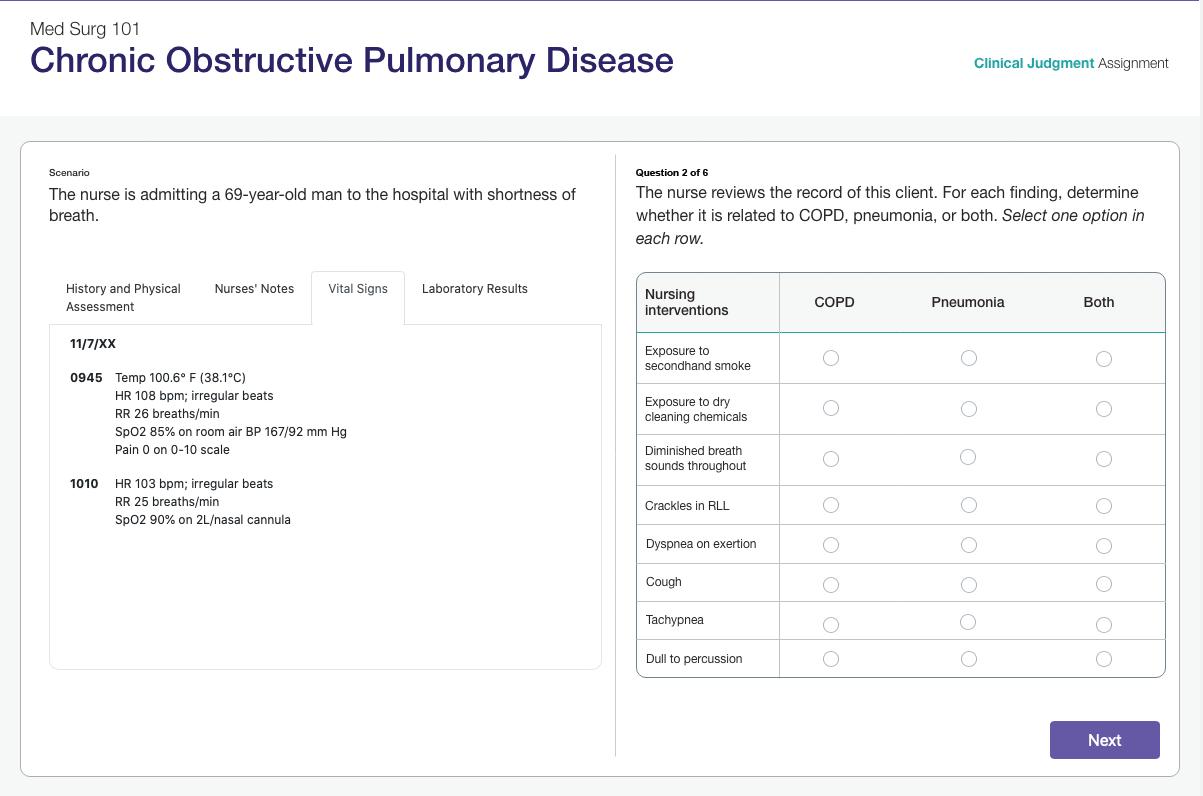




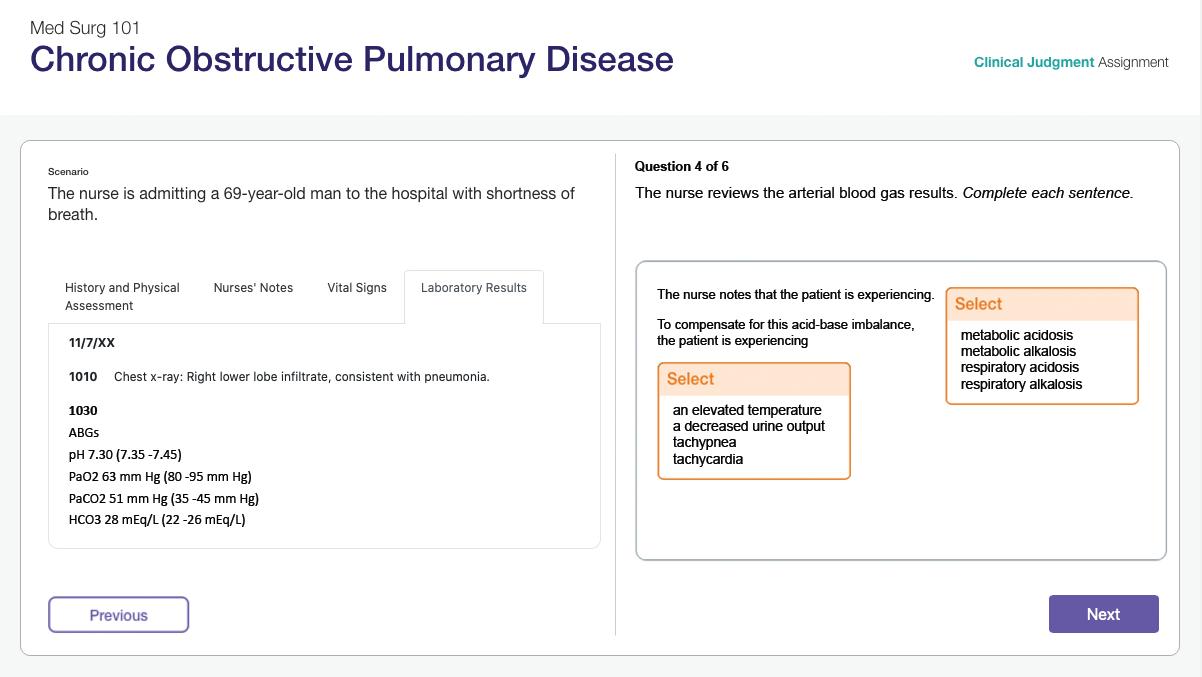
Students are guided through an analysis of their responses that includes detailed rationales. The feedback encourages them to consider what data is important and how to prioritize the information, while reinforcing thought patterns that result in safe and effective nursing care.
Personalized Learning Plans give students an at-a-glance view of their competency on Clinical Judgment cases, as well as the option to review completed assignments.


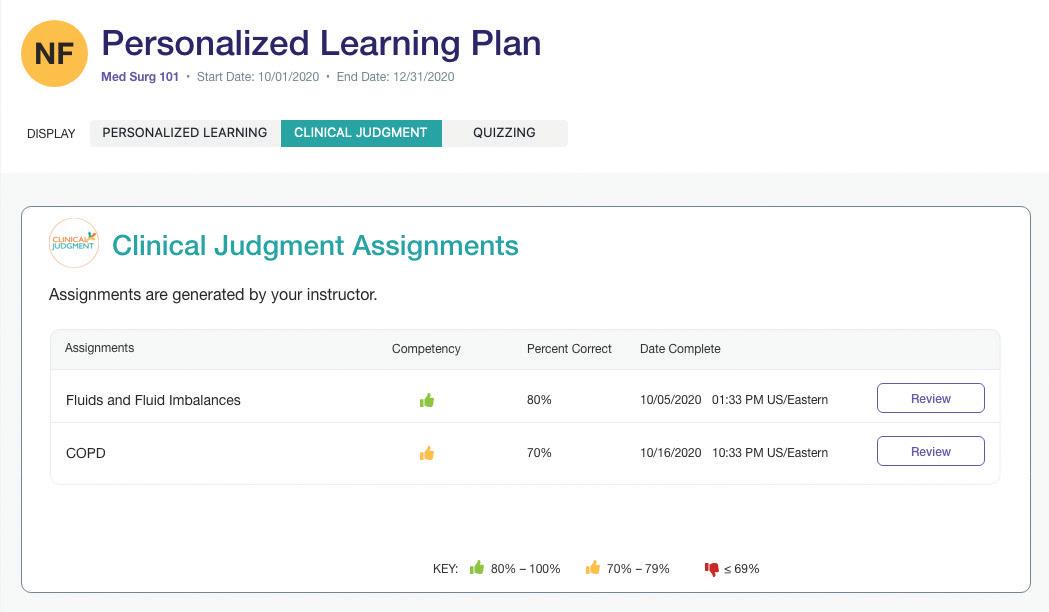
DID YOU KNOW?
91% of students who received an A in their class used Quizzing multiple times a week
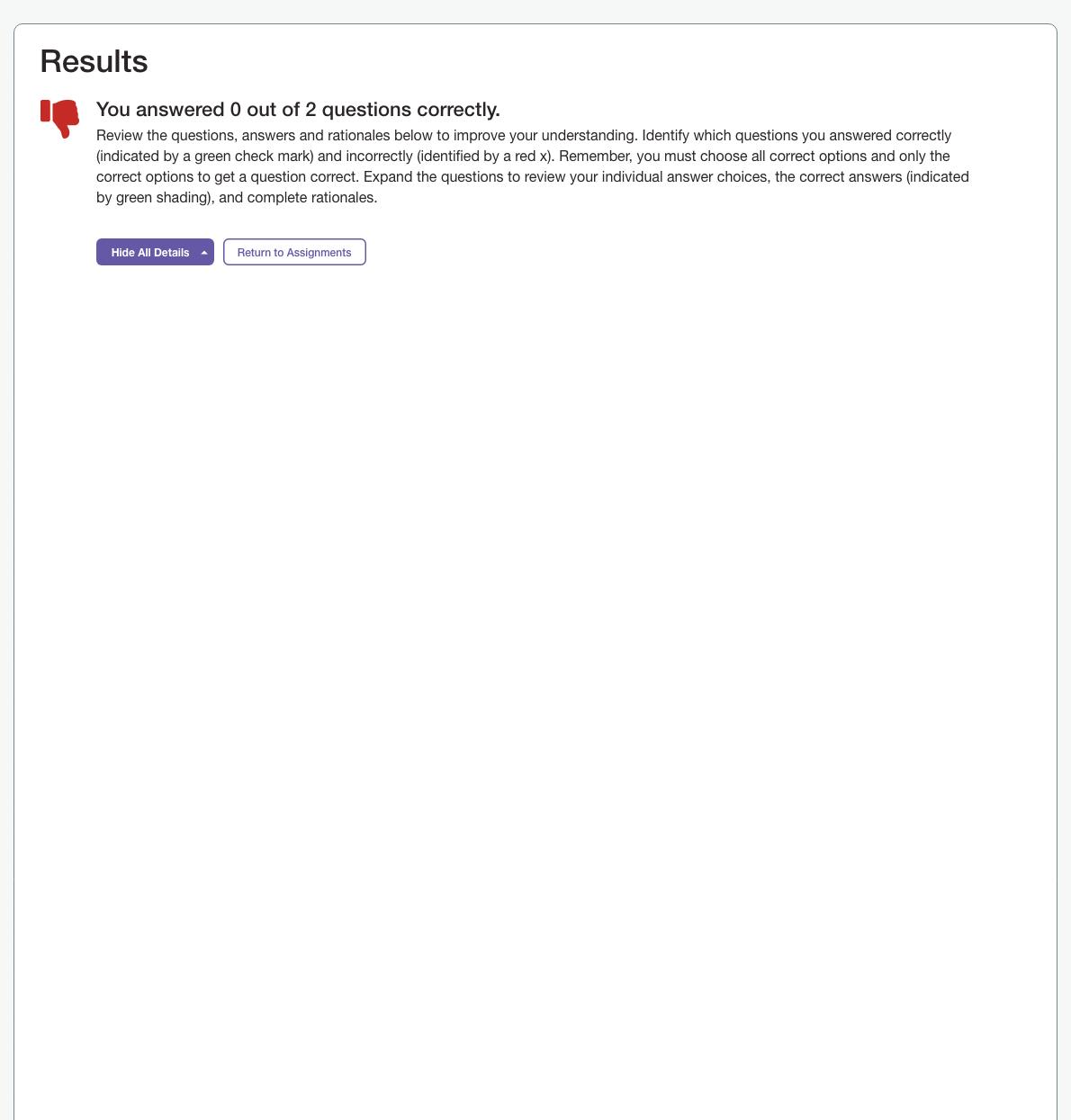
Quizzing uses NCLEX®-style Q&A to provide the additional practice students need to master mustknow content and improve their scores on classroom exams, while building NCLEX confidence.
New NGN stand-alone items
See page 17 to learn more.
Student Feedback ties each question to specific skills in the NCSBN Clinical Judgment Measurement Model and includes page references to the text for remediation.
“I assign weekly quizzes to help my students better understand the material they are learning. As the weeks in the semester pass, I am seeing a steady improvement in the grades my students are achieving on these quizzes. Thanks, Davis Edge!”
—Lenore Cortez, Instructor, Angelo State University
NCLEX®-style questions cover the same topics and concepts as the book, and align with Personalized Learning and Clinical Judgment to provide another way to assess how well students understand the course material.
High-quality questions, including more difficult question types, like select-all-that-apply challenge students to think at higher cognitive levels.
§ 25 new, stand-alone questions follow bowtie and trend formats to better prepare students for these individual item types on the NGN.
§ Bowtie questions address all six steps of the Clinical Judgment Measurement Model. They provide 5 spaces for drag-and-drop answers to form the shape of a ‘bowtie’. To answer the question, students must drag-and-drop responses into the blank answer targets.
§ Trend questions address multiple steps of the Clinical Judgment Measurement Model by asking students to review patient information over time to identify trends in the data.

Comprehensive rationales provide students with immediate feedback for on-the-spot remediation that explains why their responses are correct or incorrect. Page-specific references direct them to relevant content in their text, while Test-Taking Tips improve exam skills.
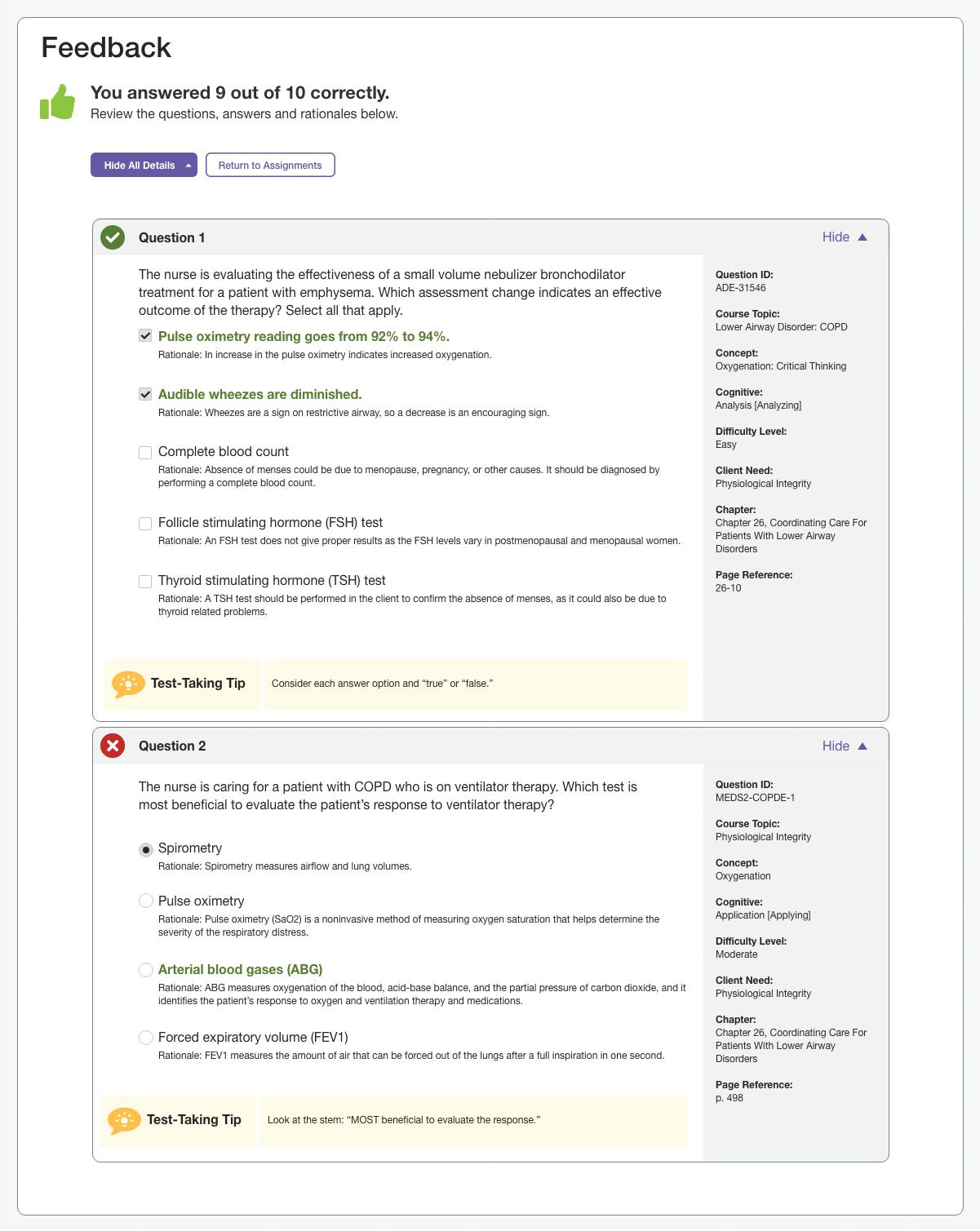

Bowtie and trend questions are individual, stand-alone items that present a portion of a patient’s chart and measure one or more of the 6 cognitive skills of the Clinical Judgment Measurement Model within the single item.
*Added to Davis Advantage products on a rolling basis. Contact us to learn more.
Students’ Personalized Learning Plans monitor their performance on each Personalized Learning, Clinical Judgment, and Quizzing assignment to highlight areas of strength and weakness.
Personalized Learning Plans provide students with a snapshot of their progress on their quizzes, tracking their successes and identifying areas where they need to focus their studies.
We have helped thousands of educators build more engaging and active courses to drive student success in class, on exams, and in their careers. Whether you are looking to start a new program, new to education, or an experienced instructor—you can count on us to help meet your challenges.
Students can easily create their own practice quizzes to focus on the topic areas where they are struggling or to use as a study tool to prepare for an upcoming exam.
Screenshots shown reflect content from Davis Advantage for Medical-Surgical Nursing, but functionality is identical in every course area. Online content subject to change upon publication.
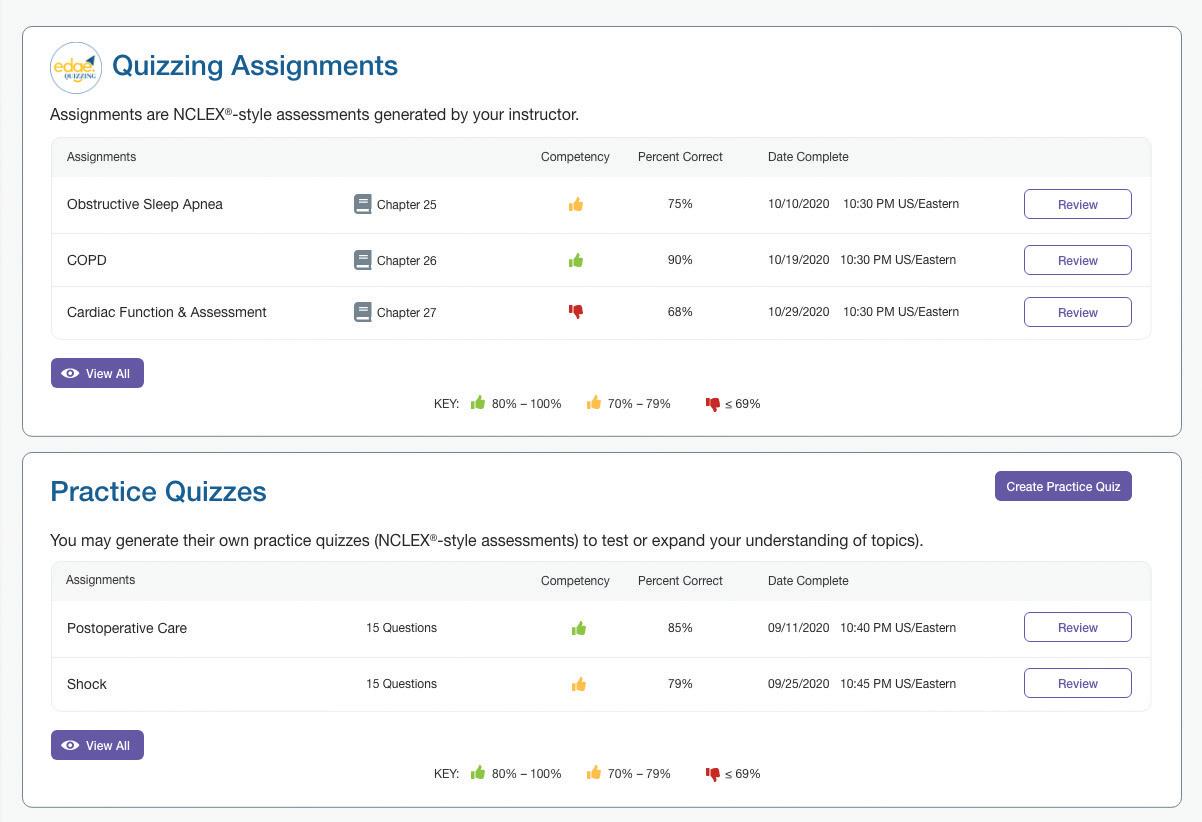

Discuss your program needs with our expert team to find the customized solutions that will achieve your curriculum goals.
Receive 1:1 training that makes course set-up easy, saves you time, and improves student retention.
Access powerful tools to stay on top of new standards and test plans, evidence-based educational trends, and effective teaching strategies.
As a family-owned company, your program is important to us and we are committed to providing exceptional customer service.
F.A. Davis is dedicated to your success and eager to discuss how we can make a difference in your program. Visit FADavis.com or email Hello@FADavis.com to start a conversation.
Whether you are teaching in-person or virtually, Davis Advantage makes teaching personal, responding to the unique challenges you face and the needs of your students. Actionable analytics enable you to track your students’ progress, assess their strengths and weaknesses, and provide content-focused remediation in real time while promoting an active and engaging learning environment.
Ultimate control is in your hands. Create the class that meets your unique needs, reflects the content you teach, and aligns with your goals.
Choose from two organizational models—Traditional- or Concept-based—depending on how your program teaches the content. Students will only see the view you have selected.
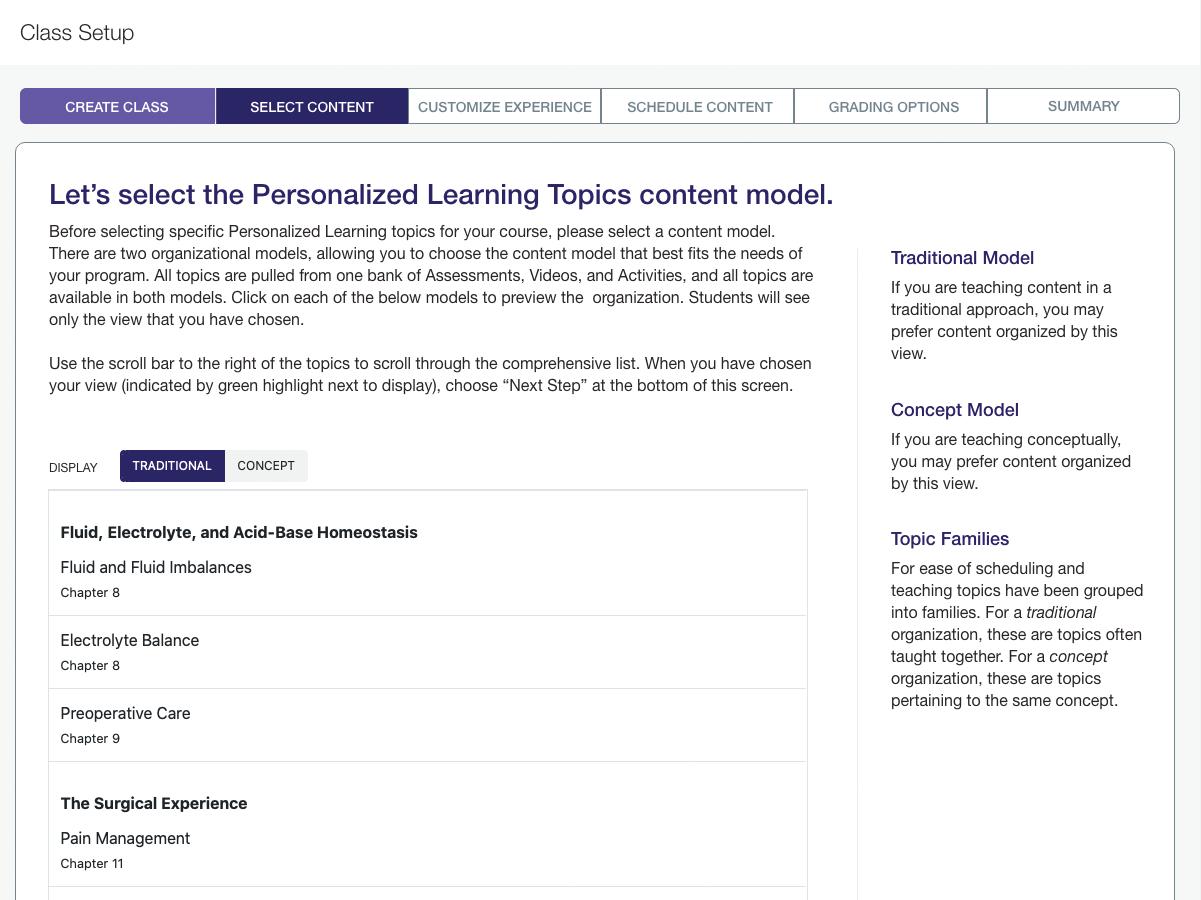
of instructors would recommend Davis Advantage to a colleague.
Select the topics that you’d like your students to work through. You can also “turn off” any topics you won’t be teaching and drag-and-drop topics so they appear in the exact order you plan to teach them.
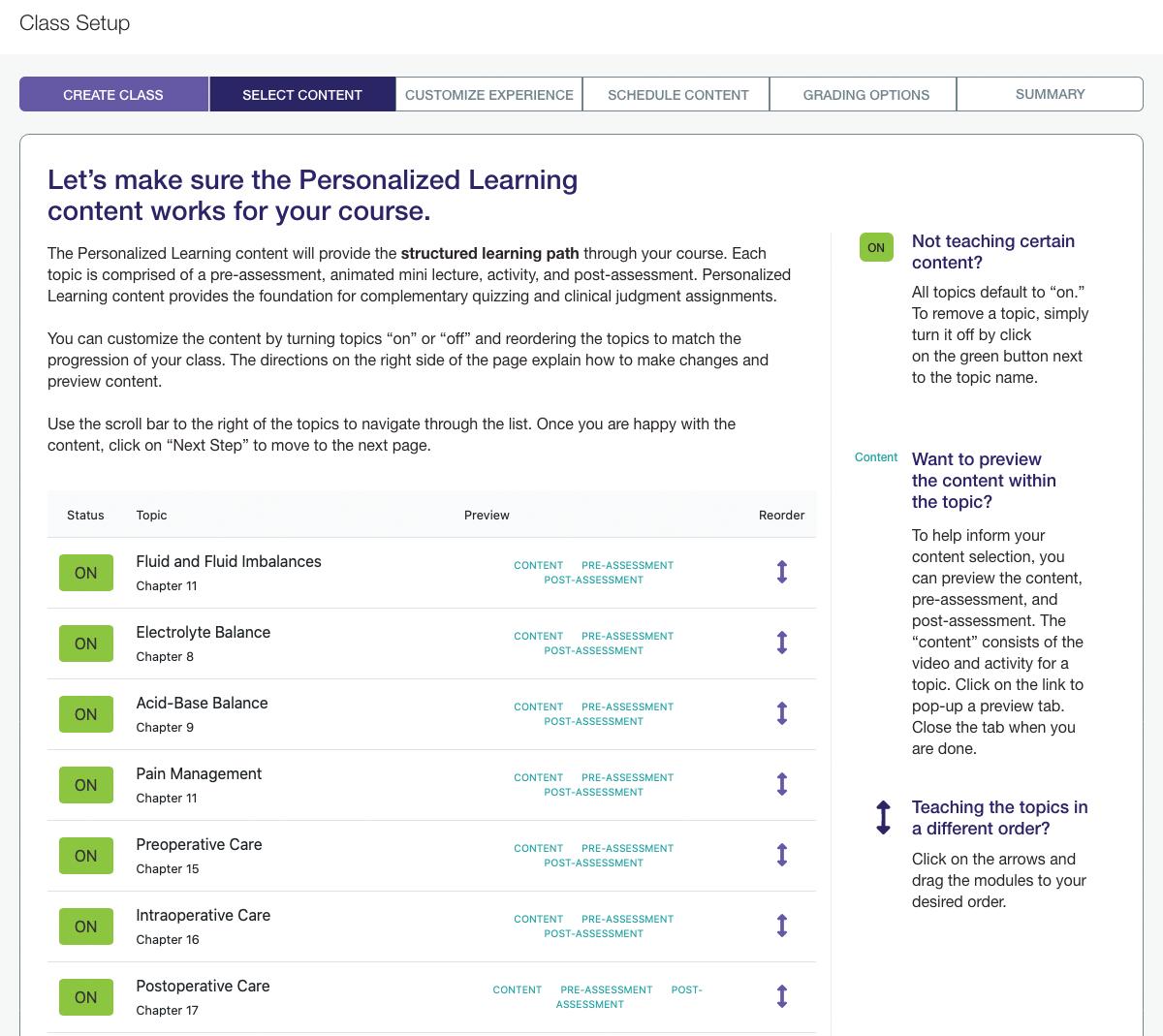
Increased flexibility lets you build the learning experience that works for your course.
Clinical Judgment and Pre-set Quizzing assignments can be added with one click to save you time.

Actionable analytics show exactly how your students are doing so you can evaluate their participation, progress, and areas of weakness before they come to class...enabling you to focus on the topics that require remediation in class.
Track participation and performance on each Personalized Learning Clinical Judgment, and Quizzing assignment.
Monitor mastery of content at both the individual and classroom level. View your class’s performance at a glance, or drill down to see individual student progress.
Use your Dashboard to track your class’s overall performance at a glance. View average participation, time spent and strengths and weaknesses. You can also quickly access individual assignments and your personalized teaching plans.
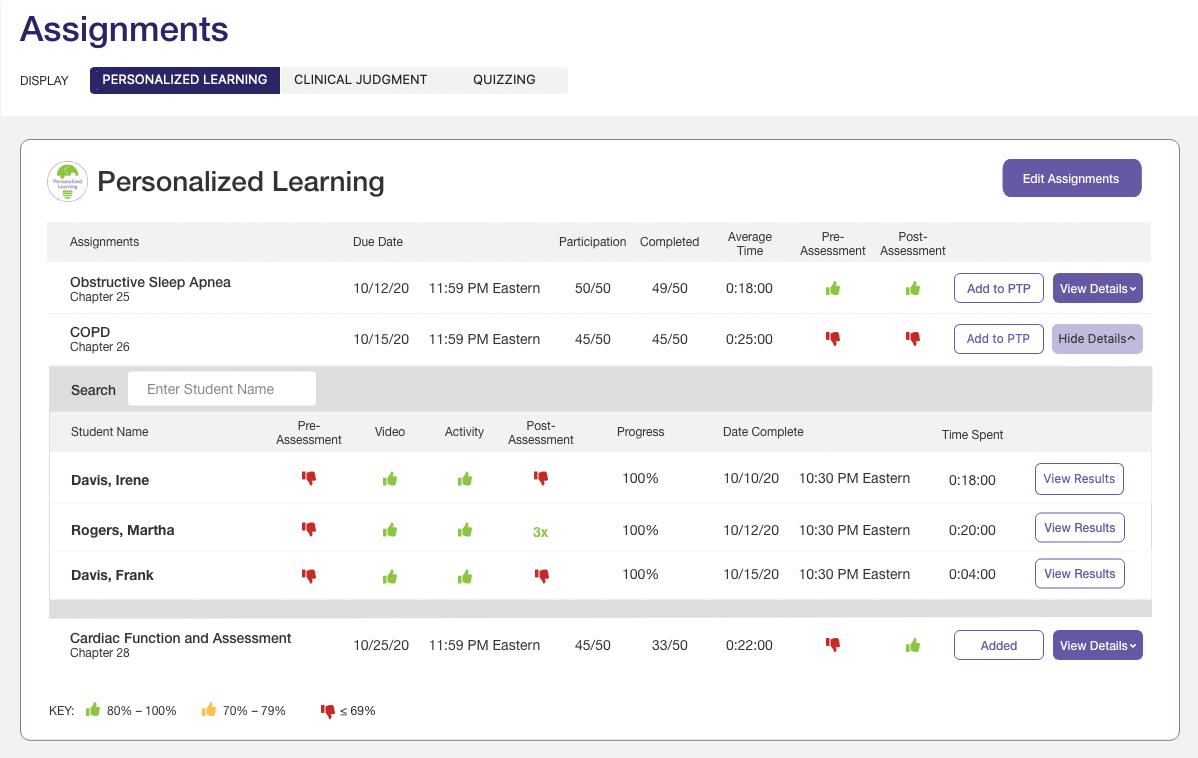
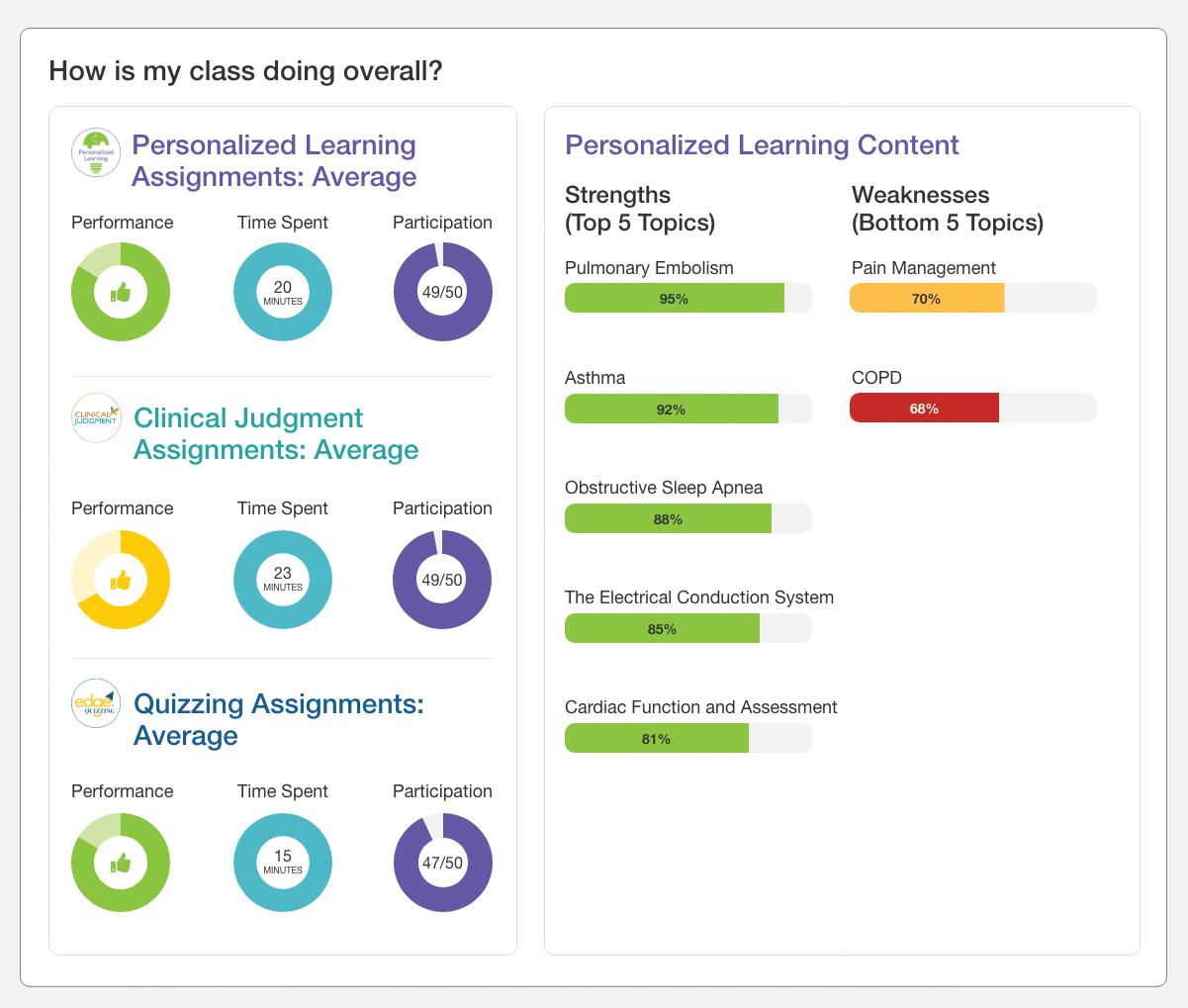

Engage students for higher level learning. Use your Personalized Teaching Plans to turn classroom time into an active, hands-on learning experience that focuses on improving their areas of weakness.
Personalized Teaching Plans for each topic provide everything you need to save time and ensure student success, including turnkey learning activities, discussion topics, small group work, and case studies.


FREE, ONLINE CONSULTATIONS
Teaching Online?
Online Application tips provide strategies for applying activities in a virtual learning environment.
are available for instructors using our products. You will have access to a dedicated Digital Implementation Consultant who can suggest the best ways to use our products in your course and share best practices and strategies for success.
Direct access to a specialist to answer any questions
Personalized onboarding to help set up your course

Resource library with support materials to make implementation easy
Collaboration on curriculum strategies to ensure the best outcomes

“I have always loved the top notch quick service from F. A. Davis and Davis Advantage is a game changer in the classroom, lab, and clinical.”
Learn how Davis Advantage can be customized to meet your needs and the needs of your class.
Let us help!
Email Hello@FADavis.com or visit FADavis.com/DavisAdvantage
For adopters of multiple Davis Advantage products, Curriculum Analytics offers Deans and Directors even more insights into meaningful aggregate and cross-course data.
These institutional-level analytics allow programs to easily track performance throughout the curriculum and identify trends over time by monitoring cohorts of students across their courses, as well as individual student performance in multiple course areas.
Curriculum at a Glance delivers class averages for each of the products a program is using. The first level of the dashboard provides a high-level overview with aggregate data, but it’s easy to access a specific product’s class data.
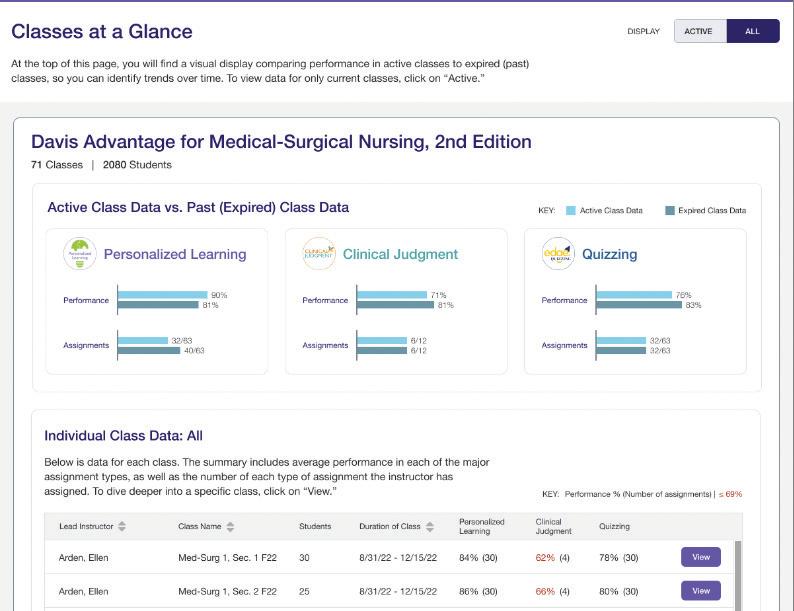


View Individual Class Data to see the average performance in each of the assignment types, as well as compare the number of assignments an instructor has made.
For each course area, Classes at a Glance compares active vs. all class data to help identify trends over time.
A performance warning is added next to any class where the student is performing below the class average.
Student Summary provides an in-depth view of an individual student’s performance across all products and classes they are enrolled in. View overall average performance in each of the assignment types, or drill down to Individual Class Data to see the student’s average performance in each course area.




